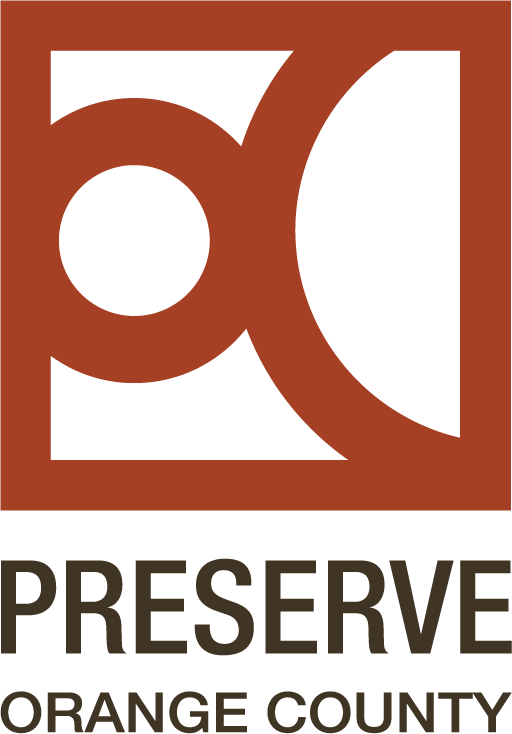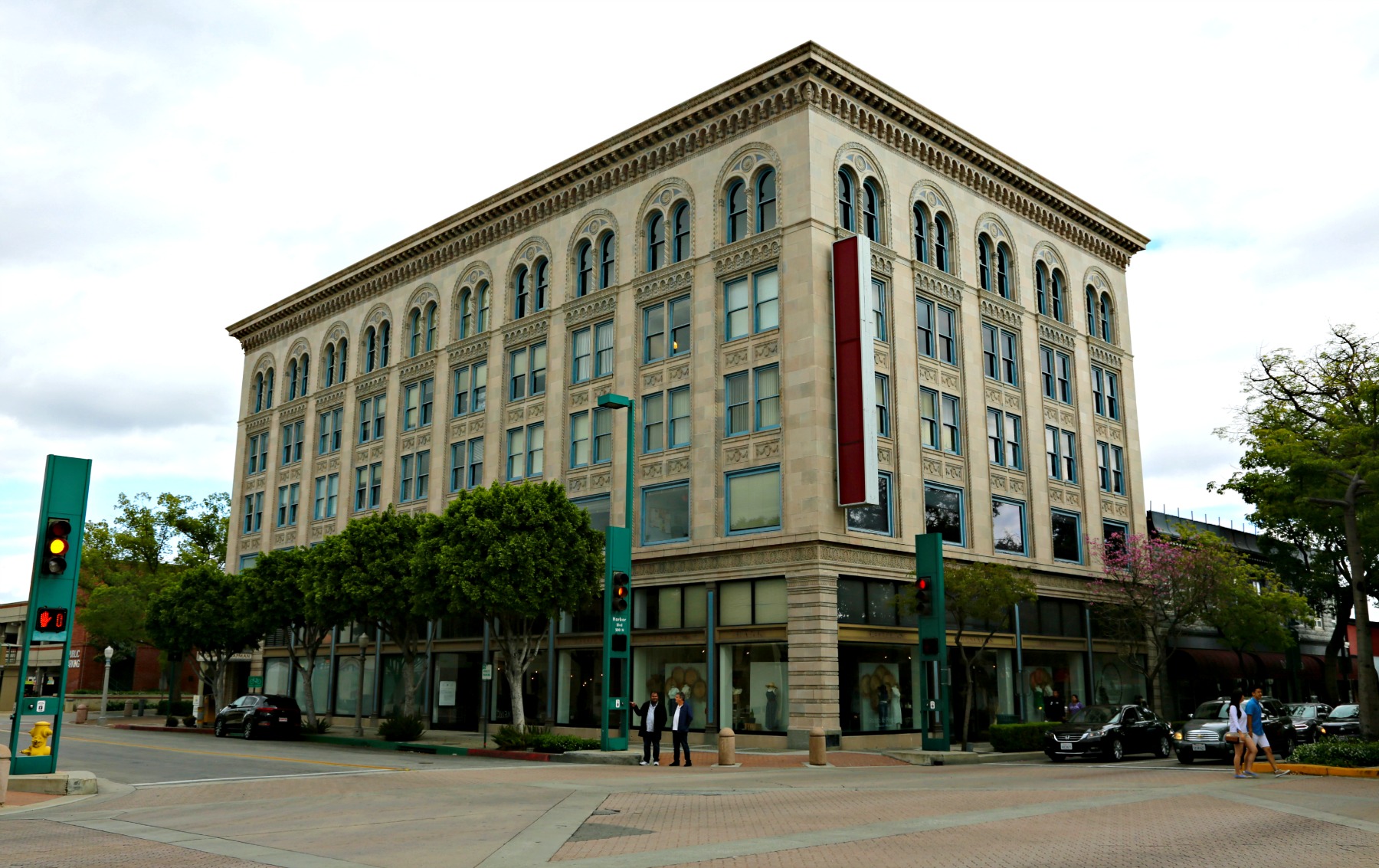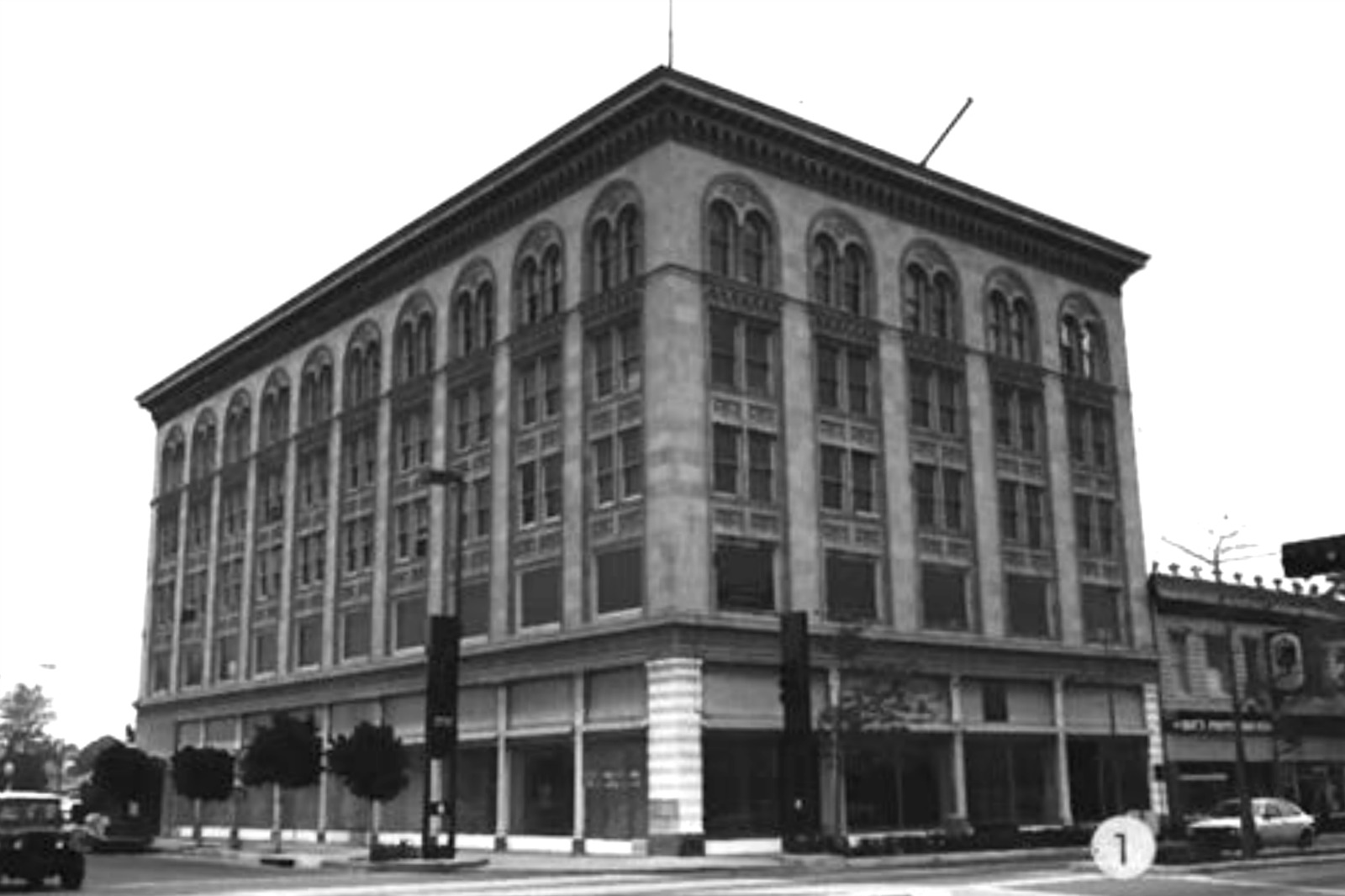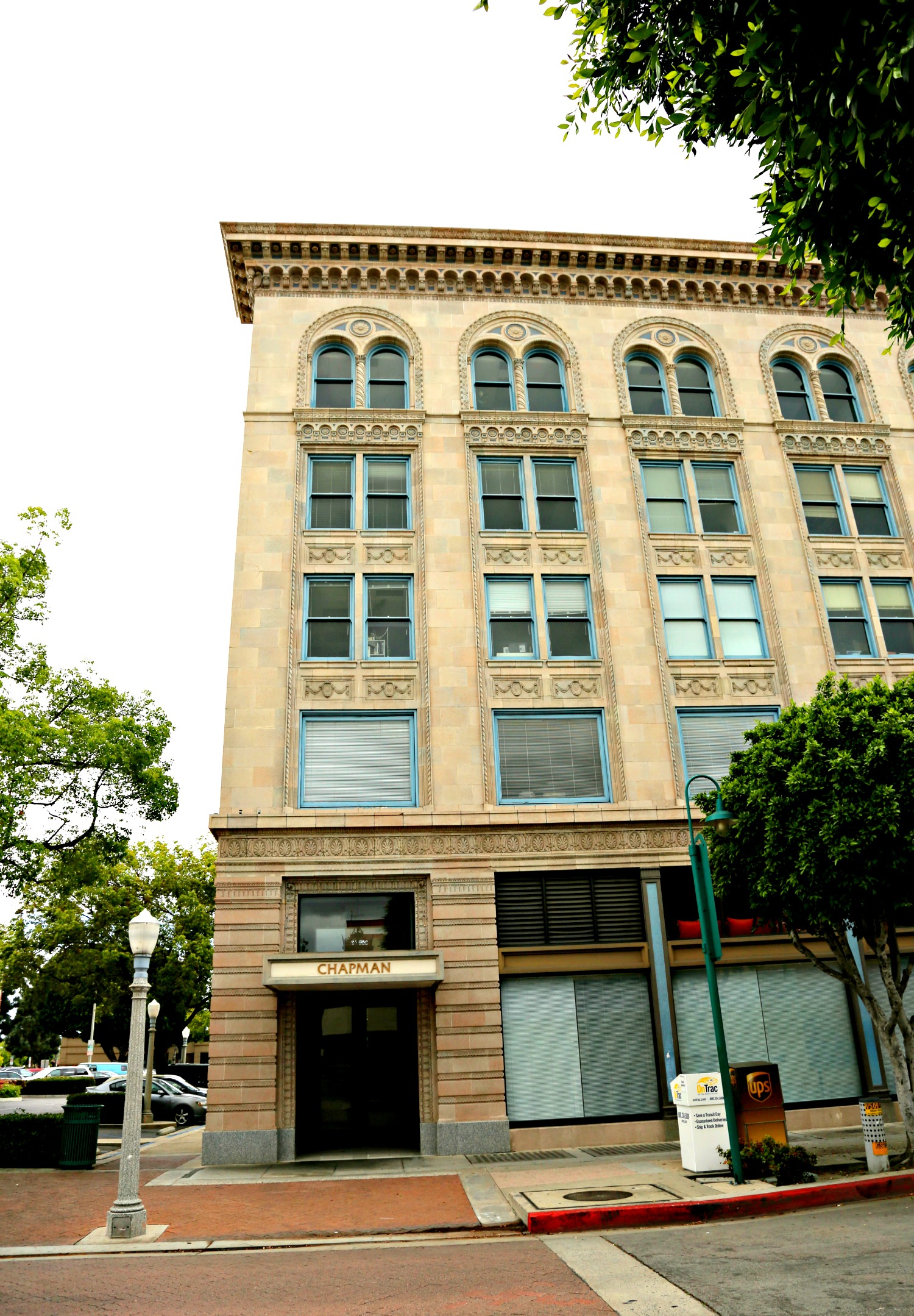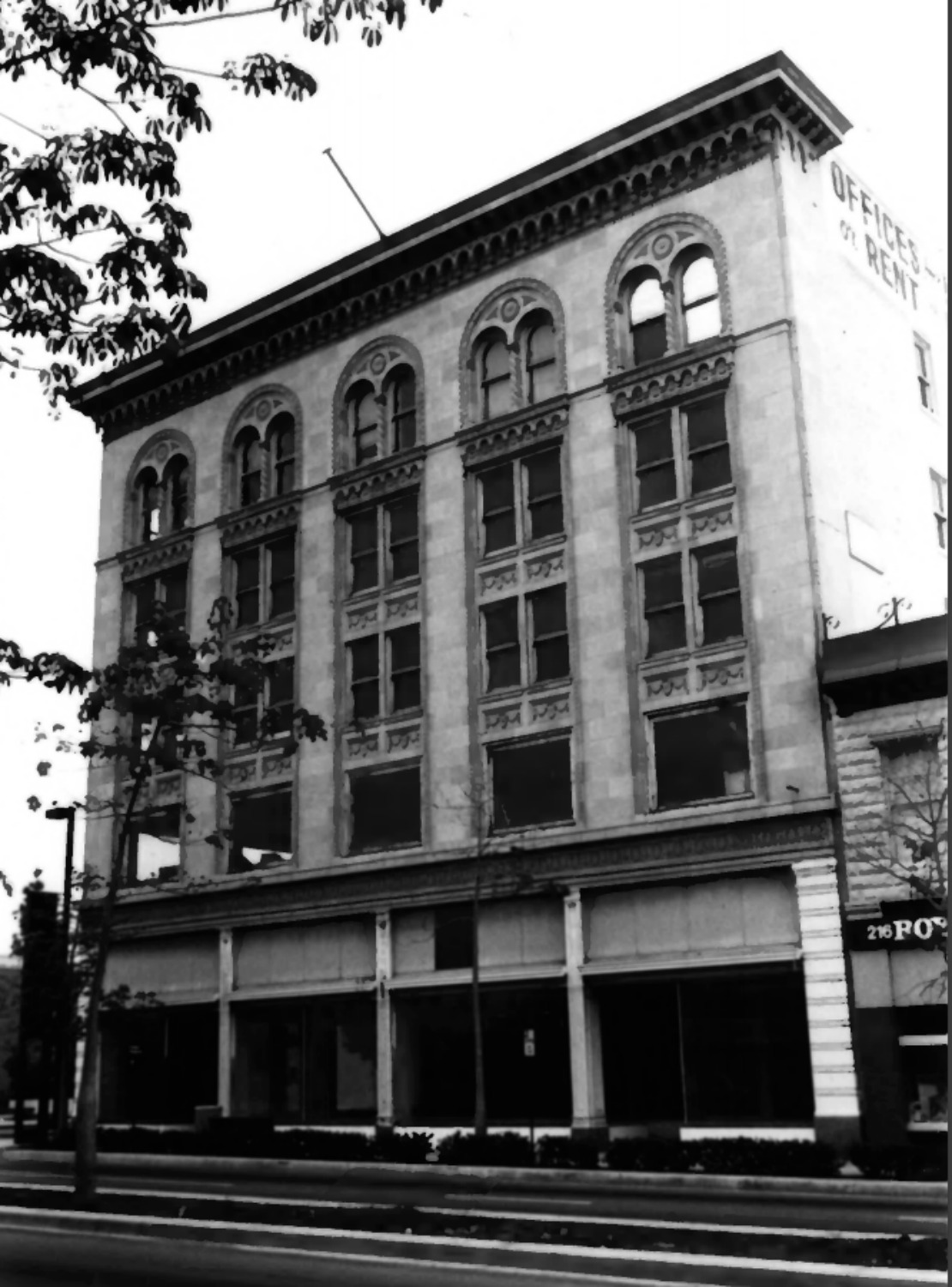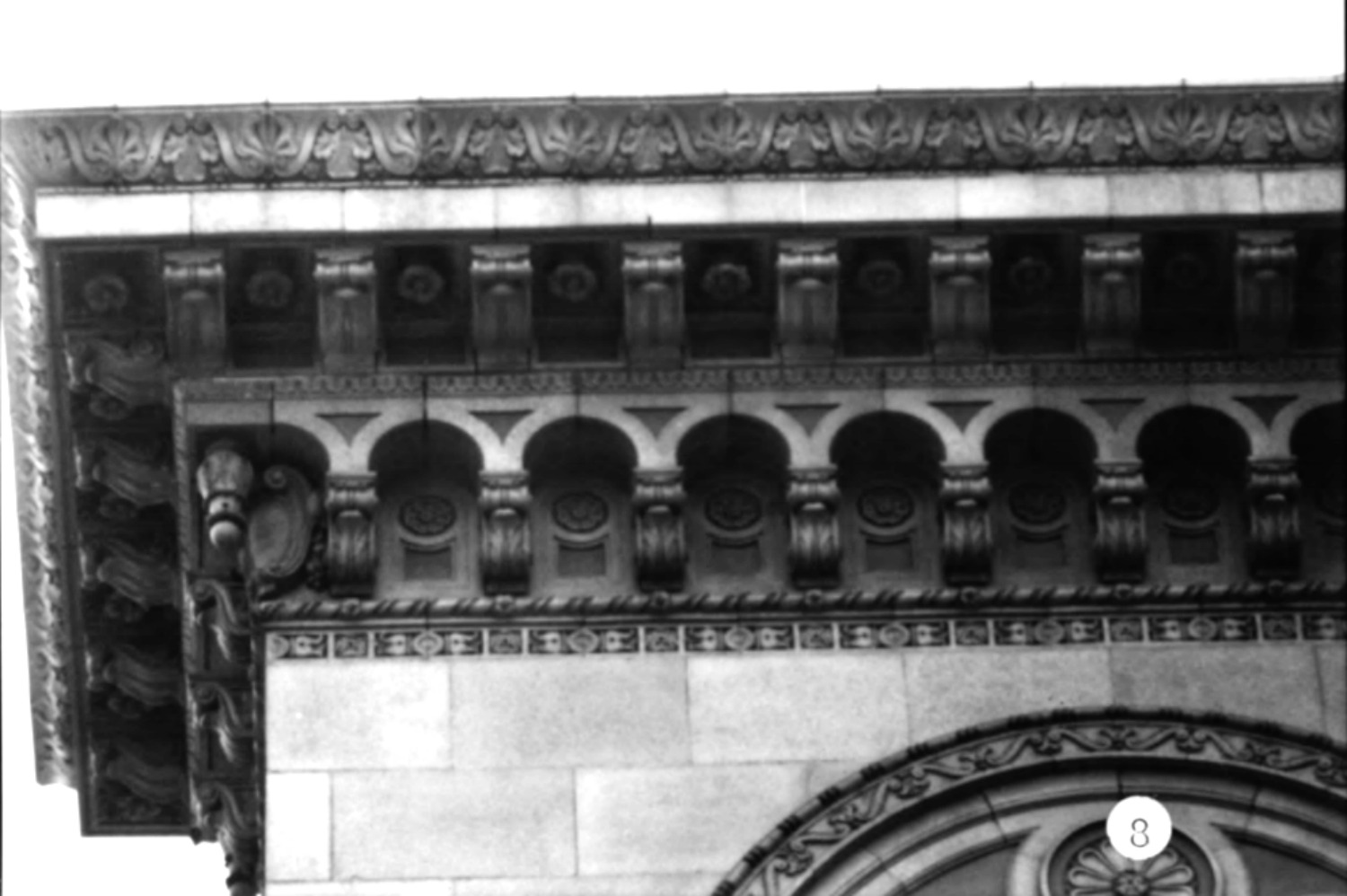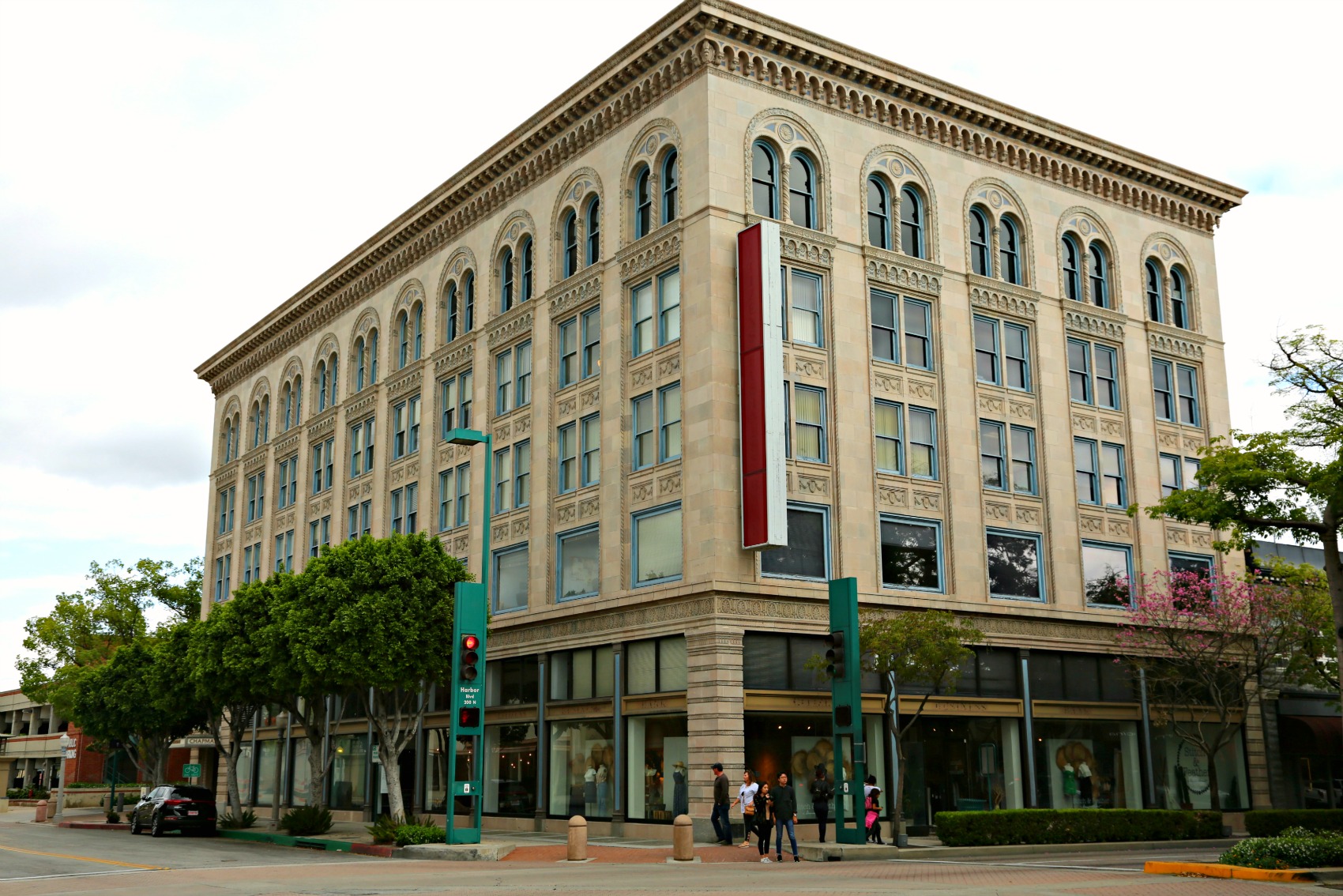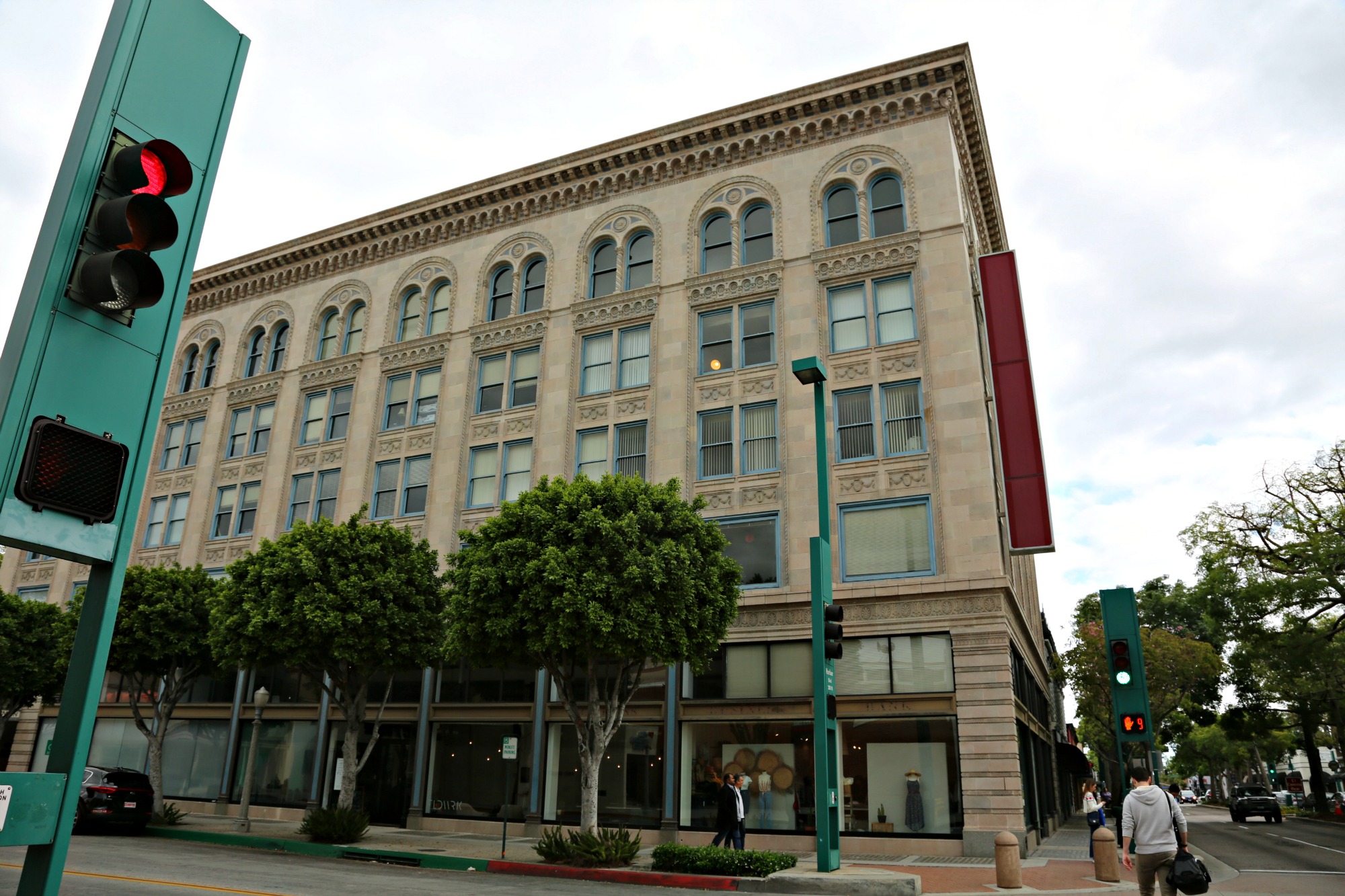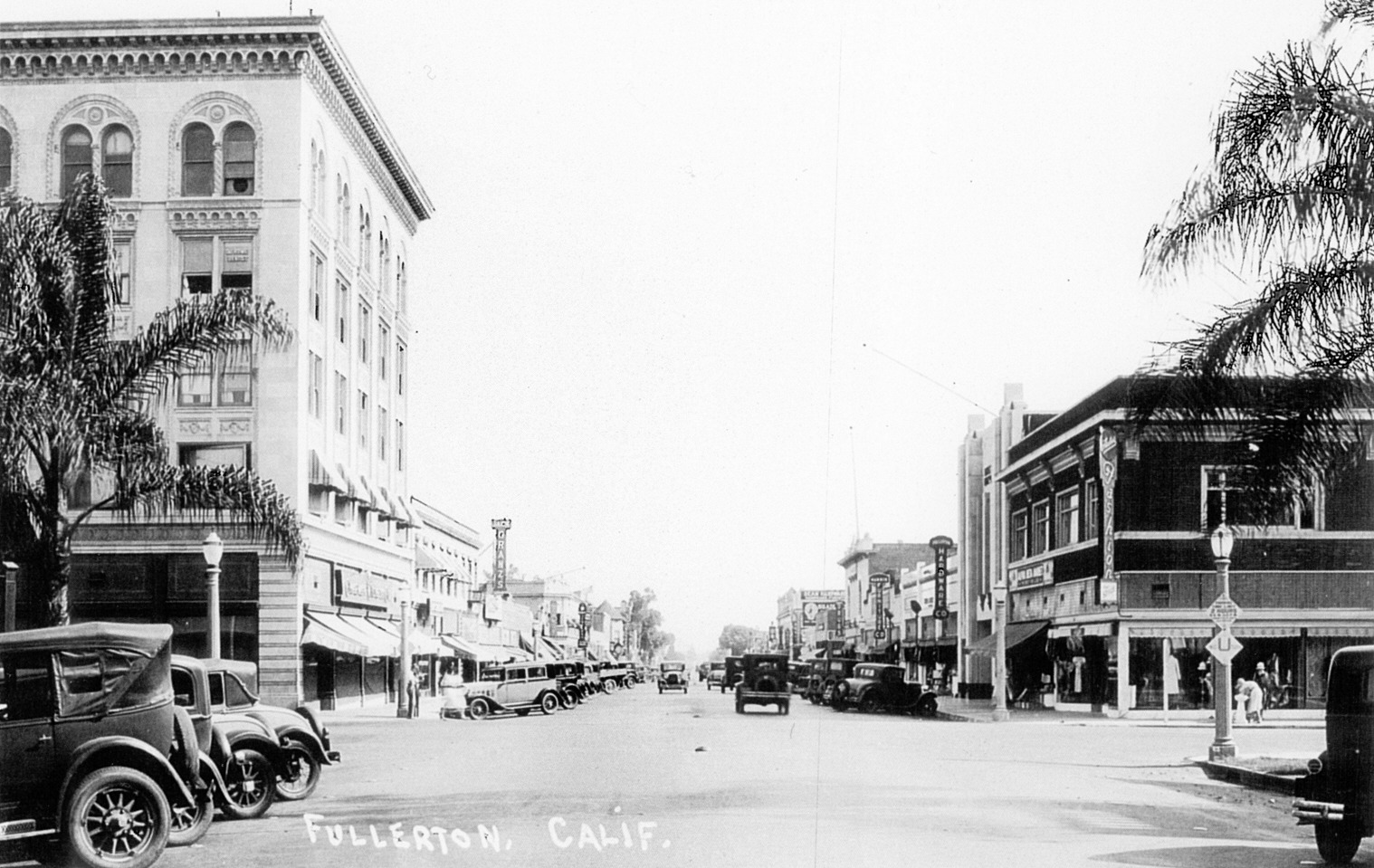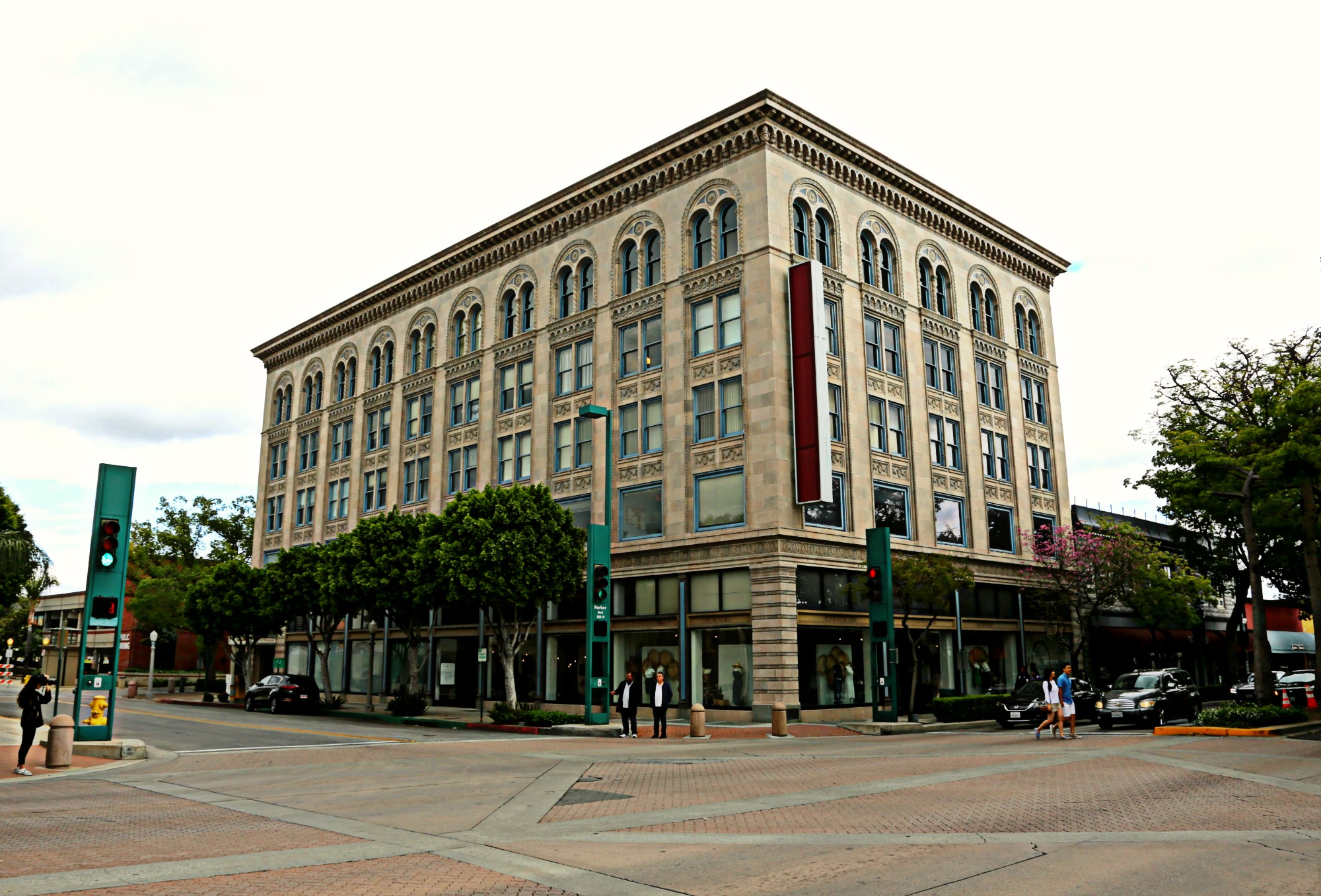The Chapman Building
110 East Wilshire Avenue, Fullerton
Starting to soar heavenward at 65 feet and five stories, the Chapman Building once held the distinction of being the tallest building in Orange County. Designed by area architect Morien Eugene Durfee for Fullerton Mayor Charles Clarke (C.C.) Chapman in 1923, the structure’s design is reminiscent of buildings from the Chicago School at the turn of the century, on a smaller scale. It bears features that resemble Louis Sullivan’s only New York design, the Bayard-Condict building (possibly Sullivan’s favorite). Both buildings were designed with an emphasis on the windows and vertical lines, so that the eye travels up until it reaches the extruding ornamental cornices. The Durfee and Sullivan designs also used lots of glass in proportion to solid wall, perhaps a hint of later glass, steel, and concrete high-rises.
The 60,000-square-foot Chapman was built during a prosperous time for Fullerton and reflects the optimism of the pre-Depression era. Original materials included painted brick and masonry with terra cotta details. Architect Durfee also used features influenced by Revival styles of the era, such as top-floor arched windows, arched corbels, and cable moldings. The Chapman’s basement is illuminated by glass blocks embedded in the sidewalk. The building was listed to the National Register of Historic Places in 1983.
About Mr. Chapman
Entrepreneur Charles Chapman moved from Chicago—birthplace of the skyscraper—to Southern California in 1894 for his first wife’s health. Charles and his brother, Frank, quickly established themselves as pioneers in the citrus industry, acquiring fruit ranches in Covina and the Fullerton-Placentia area. In 1899, the Chapman brothers split their holdings, and Charles took the 175-acre ranch known as the Placentia Orchard Co. Employing skills from his days in Chicago publishing, Charles was one of the first to use decorative crate labels. Known as the Orange King of California, Chapman also perfected packing methods that resulted in better-quality fruit.
Chapman became Fullerton’s first mayor in 1904 and was a possible California Republican gubernatorial candidate in 1914 and a vice-presidential running mate for Calvin Coolidge in 1924, but withdrew his name both times. In the 1920s, he bought a Beaux-Arts structure downtown Los Angeles that also became known as the Chapman Building (now Chapman Flats). And Chapman University? Named after its major benefactor, Charles Clarke Chapman, who founded it under its first name, the California School of Christianity.
Incidentally, that "Tallest Skyscraper" recognition was short lived. The Samuel Kraemer Building in Anaheim, also designed by Durfee, topped it in 1924-’25.
Fullerton’s Chapman Building was renovated in the 1980s, with new terra cotta ornamentation fabricated to surround the main entrance, which had been removed during a 1950s modernization.
Archival photos courtesy of the National Register of Historic Places, the Orange County Archives, and the Fullerton Redevelopment Agency.
